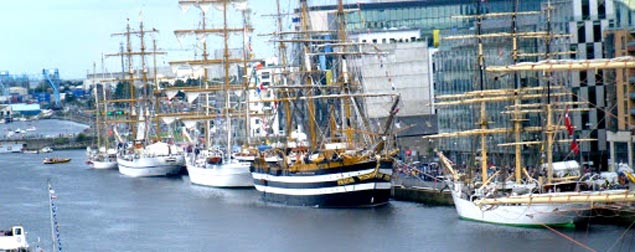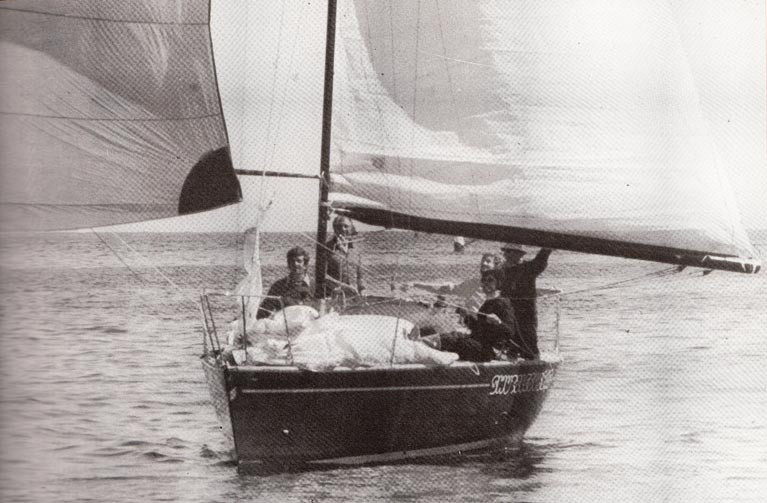Displaying items by tag: Bruce Lyster
Bruce Lyster 1941-2020
The death of Bruce Lyster of Dun Laoghaire at the age of 78 is the sad loss to the Irish sailing community - and our maritime world generally - of a multi-talented figure who combined exceptional abilities in the financial and administrative areas with an abiding zest for the sea and sailing, and an engaging enthusiasm for encouraging others afloat through his work in sail training.
He showed such a talent for mathematical and financial studies in his boyhood that he was recruited directly from school in Dublin into the rising ranks of the growing international accountancy firm which became Price Waterhouse Cooper, while in sailing he was to go on to fill many roles, the most high-profile being as Commodore of the Royal St George Yacht Club from 1995 to 1998.
He came to this and many other significant positions through the combination of his special administrative talents, and a personal devotion to sailing which mainly expressed itself through sailing cruisers and offshore racing. In the late 1970s, he was one of several owners in Dun Laoghaire who campaigned a Ron Holland-designed 30ft Club Shamrock in DBSC and ISORA racing, but in 1979 the experience of coming through the notorious Fastnet Race storm of that year in Patrick Jameson’s Swan 40 Finndabar broadened his outlook.
Far from being put off high profile competition by this experience, for the season of 1980, he decided to go at top-level racing with exceptional thoroughness through the acquisition of the somewhat wayward but exceptionally fast Bruce Farr-designed New Zealand-built Half Tonner Swuzzlebubble, which Bruce Lyster rightly envisaged as being ideal for one season of flat-out campaigning
He recruited a crew of already proven but still rising talents of the calibre of Robert Dix, Drewry Pearson, Des Cummins and others to fulfil a dream season – run with typical Lyster efficiency on the basis of his quiet yet indomitable determination and special administrative talents – which by the end of the summer of 1980 saw Swuzzlebubble resplendent with many DBSC trophies, together with a host of prizes from a Cowes Week campaign in which they won every race except one, and at the end of August an overall win in the Abersoch-Howth Race which clinched the ISORA Championship Title for 1980.
He was out of the Irish scene for a while with a period working in New York, and when he returned it was to race and cruise in due course in the deeper comfort of the Sigma 38 class which developed in Dublin Bay around 1990, his own boat being Errislannan, named for that lovely bit of coastal west Connemara immediately south of Clifden, where the Lyster family had a holiday property.
However, it was in Dublin and Dublin Bay that he was now filling administrative roles in several organisations, for in addition to his rise through the officer ranks of the Royal St George YC, he was much involved with the Sail Training organisation, and played a key position in running the 1998 Tall Ships visit to Dublin, the largest gathering of tall Ships ever seen on the island.
 Tall Ships gather in Dublin Port. Bruce Lyster was in a key organising committee role during their record-breaking visit to Dublin in 1998
Tall Ships gather in Dublin Port. Bruce Lyster was in a key organising committee role during their record-breaking visit to Dublin in 1998
The fact that he was very active in this while in his final year as RStGYC Commodore gives some indication of Bruce Lyster’s ability for multi-tasking. But his renowned capacity for efficient administrative procedures and his legendary ability for the rapid analysis of a set of financial figures meant that – as one former colleague put it – “ten minutes of concentrated input from Bruce Lyster was worth an hour of anyone else’s more generalized opinions”
Inevitably this meant that in areas involving his most highly-developed levels of expertise, there would be times when he didn’t suffer fools gladly. But in everyday matters and in the general business of running organisations which supported his enthusiasm for the sea and sailing, he was the essence of charm with a quiet sense of special and alert humour which was much enjoyed by those privileged enough to experience it.
Sail Training remained one of his particular enthusiasms, and after retirement from professional life, he continued his involvement with Sail Training Ireland, something to which he gave a more tangible form through part-ownership - after the Errislannan years - of a Hallberg Rassy 38 in which he encouraged young crews to broaden their cruising and offshore experience.
At a different level, he served for many years as a Commissioner of Irish Lights while – unbeknown to his sailing world – he continued to be a valued adviser and committee member of the Irish Wheelchair Association.
As he scaled down his boat sizes with advancing age, he sailed for a while with the First 31.7 Camira, and his final sailing partnership was in the Shipman 28 Poppy.
His enjoyment in the company of fellow sailing enthusiasts never diminished, and those who knew Bruce Lyster will cherish his memory and the remarkable contribution he made to Ireland’s maritime life across a broad spectrum of interests, to each of which he gave dedicated commitment. Our heartfelt condolences are with his family and friends in this very sad loss.
WMN





























































